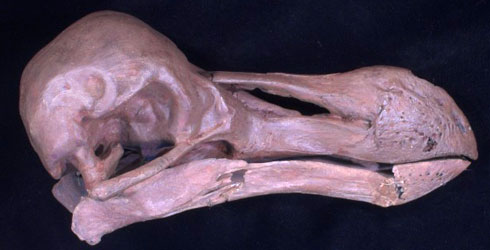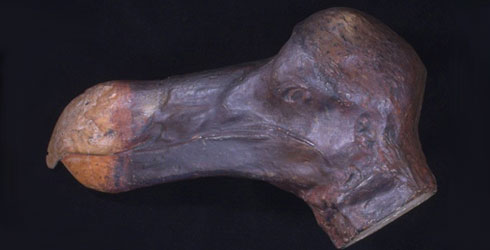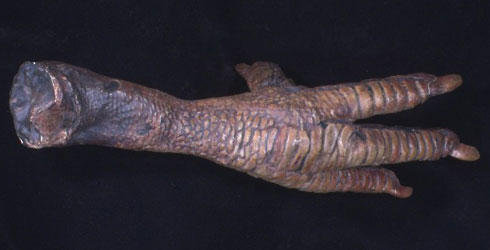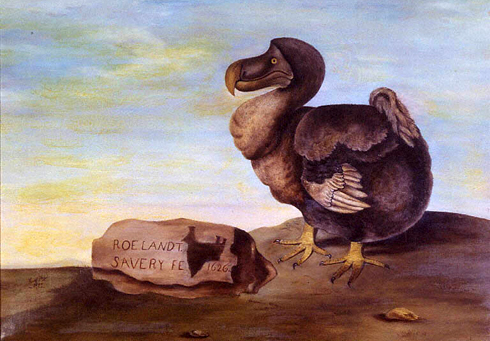Raphus cucullatus (dodo)
The flightless dodo, Raphus cucullatus, was native to the island of Mauritius, in the south-western Indian Ocean.
On 20 September 1598, a Dutch fleet commanded by Admiral Wybrant van Warwijck found a channel through the reef encircling Mauritius, and initiated the permanent settlement of the island.
Less than a century later, the dodo was extinct, and other species followed rapidly.
A close relative, Pezophaps solitaria, lived on the nearby island of Rodrigues, but suffered a similar fate to the dodo.
Conservation on Mauritius
The dodo became extinct due to:
- habitat loss
- competition from introduced species
Conservation efforts on Mauritius are too late to save the dodo, but captive breeding has dramatically increased the populations of the:
- pink pigeon
- echo parakeet
- Mauritius kestrel
Unfortunately, very little viable habitat remains for these birds to live in, and the eradication of rats, mice, cats and other predators is difficult and rarely successful.
Images

A restored skull of Raphus cucullatus in the Natural History Museum, London.

A plaster cast of the preserved head of Raphus cucullatus. The original is in the Oxford University Museum of Natural History.

A plaster cast of the preserved foot of Raphus cucullatus.

Oil painting of Raphus cucullatus, inscribed Roelandt Savery (1626).

Illustration from Memoirs on the dodo by Sir Richard Owen, 1866.

Detail of a terracotta moulding of a dodo in the Waterhouse Building at the Natural History Museum, London.
About the author
Toolbox
References
- Cheke, A, and Hume, J, (2008) Lost Land of the Dodo: An ecological history of Mauritius, Réunion and Rodrigues. T & A D Poyser, London. 464 pp.
- Fuller, E, (2002) Dodo: from extinction to icon. Collins, London. 180 pp.
- Grihault, A, (2005) Dodo: the bird behind the legend. IPC Ltd. Mauritius. 171 pp.



